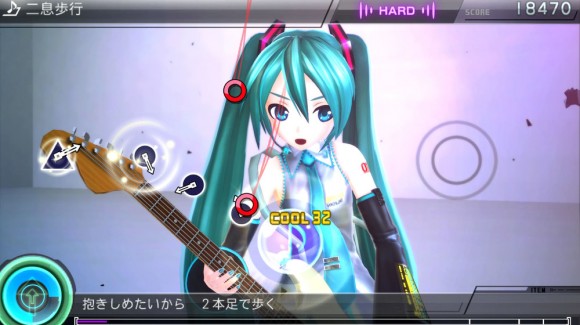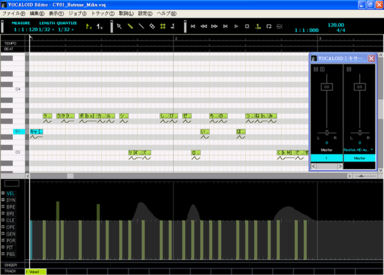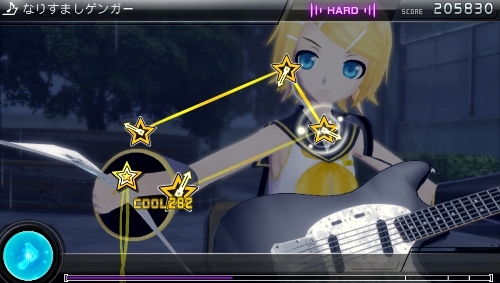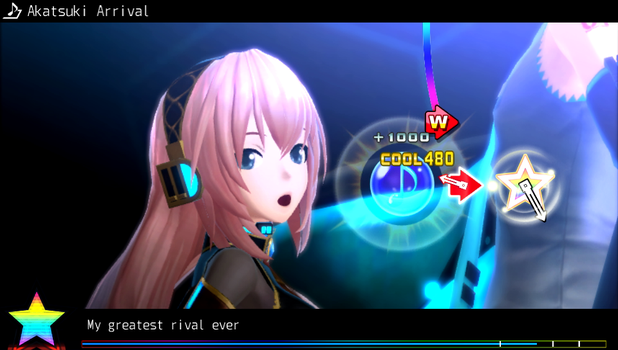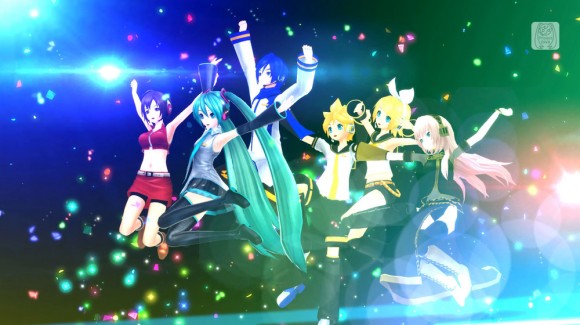I don’t care if you’re not a fan of Japanese anime or video games, that you’re not a quote weaboo unquote, that you’ve never had yellow fever and decided if you were being chased by a pack of flaming space wolf sharks with AK-47s that shot sharks that shot bees and the only place you could go for safety was Japan and still went “Nope, not going to do it”, you’ve probably heard of Hatsune Miku.
Just in case you haven’t heard of Hatsune Miku, here’s the personnel file: A young pop singer from Japan, she grew to stardom on the Japanese alternative to YouTube, Nico Nico Douga. She debuted number 1 in Japan’s charts in May 2010, she’s performed live concerts the world at venues such as the Saitama Super Arena and the Nokia theater in L.A. She’s appeared in several anime, video games, has had a manga written for her, and has even showed up on David Letterman.
She also doesn’t exist.
Not in the physical or human sense. She’s a “Vocaloid”, a voice synthesizer program that can sample songs created by Crypton Future Media. Instruments now have been processed and synthesized forever, with it feeling like more songs are created digitally these days than with live instruments. It only makes sense then we would try and create a mechanical version of the vocalists. Hatsune Miku was initially just meant to market to producers and music mixers, and exploded into some kind of bizarre cross cultural mythos joined by several other similar digital idols. But enough of the history, on to the game…
Project DIVA is a rhythm game developed by Sega, I always did say they should be a music producer. Listen to the music, pay attention to the key presses, and try and knock the song out of the park. You’re not exactly looking at Guitar Hero here however, Project DIVA doesn’t fuck around, it eases you into the game the way a boxer might ease a fist into your face. It demands 100% of your focus and all the hand-eye coordination you can muster, and it’s not uncommon to fail a song within a hairs breadth of getting a “Standard” completion. Easy mode lets up a little bit and the game is gracious enough to unlock both the Easy and Normal difficulties of a song regardless of which mode you go about clearing, but to get at the Hard and Extreme modes you must pass Normal which is far from a smooth task.
It’s clear Project DIVA was designed rhythm game experts. Those kids you might see at an arcade or convention blazing through the multitude of button sequences exploding across their screen. If you casually enjoyed Rockband at parties or stumbled through the lower levels of Dance Dance Revoltuion in college, this is not for you. I never thought I’d say this, but the barrier for entry is the “hardcore” rhythm game player.
And though I’m not hardcore I found myself pressing on anyway. Pushing myself to do better on easy, then tackling the intentionally disorienting tracks on Normal. I wouldn’t be deterred, but this also isn’t exactly the kind of game I could take with me on a train. No, I wasn’t blushing because I had android girls running around in short skirts with exposed midriffs, it’s just I needed all the focus I could muster. As a portable game it’s not exactly the ideal to pay that much attention and though I could easily pause or sleep at any time, and since they’re songs the most they ever take is five or six minutes, the concentration required alone prevented me from playing it outside my home.
However should you get past the sometimes incredibly frustrating levels, you are given a deep sense of reward just having actually cleared it. Then the game gives you actual reward, first; with new songs to frustrate you all over, then in a vast array of customization options for both your vocaloids and the apartment housing they reside in. The housing, or “pods” I may add, are where you can go to see your Vocaloid about their day and engage in a strange head rubbing bonding exercise, or play with multiple toys you’ve littered through out their crib.
The game is very deep with customization at that. From the wealth of cosmetic goodies that allow you to change anything from the details of each vocaloid’s appearance, to their room furnishings, down to the overlays of the rhythm game screens and the costumes they wear in each music video. Hell, hate a certain Vocaloid? Or love another so much you can’t get enough? You can boot any vocaloid from any song and replace them with one of your choice. You can change the sounds of the button scratches, if you’re a Western devil heathen like me you can select English subtitle settings, you can even choose to not have a vocaloid screw up their vocals even if you miss your button cue – cheater.
The little robot girl and friends have quite a range of talents. Starting out with the pretty run of the mill J-Pop, as the game progresses they’ll tackle a number of different styles, busting out the guitar for some rock and roll, and even stepping with a cane for some good ol’ fashioned ragtime. The little voice warble that automatically joins the synthesized tracks is always a little hard for my ears to get past, and it’s bizarre to see these constructs sing with “heart.” While it may lack some of the classic rock songs or peripheral that pulled us to games like Rockband, or the quirkiness of titles like PaRappa the Rapper, UmJammy Lammy or Elite Beat Agents, Project DIVA has some pretty killer music videos. In fact the videos are so good they’re to the point of distracting. Luckily the game gives you the option to view each video you clear at your leisure.
There’s not a lot of songs, only 40 which feels a bit light for a rhythm game, you can buy more in an expansion that’s almost as much as the game. However the unlockables and overall challenge give you incentive to keep tackling the same songs over and over, each song also has an “event” you can trigger to change the accompanying video. Sometimes this is minor, like perhaps a light show display, in other cases like the song Kagerou Days the video you get will be entirely different.
The game is incredibly mindful of how the Vocaloids got their traction; the fans and music producers backing it. Featuring songs from “Vocaloid artists” who’ve made their own tracks using the original software. Each loading screen is also a piece of lovingly done fanart that are, of course, all collectable, with costumes designed by various fans and corporate partnerships. Did I mention the Alternate Reality mode? AR often feels gimmicky or ignored, but here it’s actually used pretty well. You can get Hatsune Miku to perform an AR concert, jumping to life in your living room or outside in the snow with a very similar effect to some of her live holographic concerts.
At first glance this title is a bit of a too hard rhythm game, but deeper play gives you a wealth of content to explore and a real challenge to dig into. It’s true that this game is probably extremely niche, only fans of Vocaloids or Rhythm games need apply. Still if you’re really looking to push those fingers in some flexibility Olympics that requires an eagle eye and hawk like focus, you shouldn’t be afraid to grab this one.


